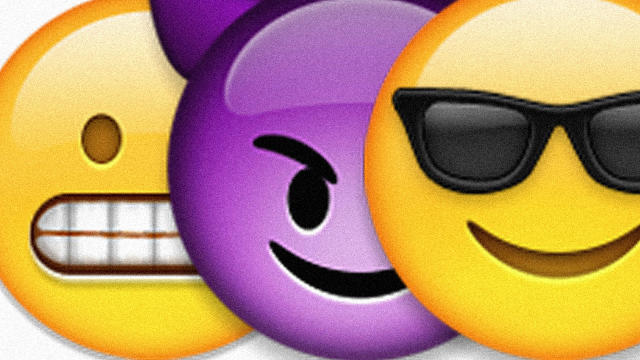Last month, the Unicode Consortium, a group that oversees the way text is coded into computer-readable language, published a new draft proposal that outlined not just the addition of 37 new emoji characters and a system for including racially diverse emoji, but a whole slate of new rules on how emoji would be added to the Unicode Standard going forward.
Far from being just another flash-in-the-pan web fad, emoji have become so important that the Unicode Consortium has had to come up with a whole new system to make adding emoji to the standard quicker, easier, and more inclusive. It's just completely different from how Unicode was handling emoji before.

For example, previously, getting emoji added to the standard was a long, drawn-out process that required Unicode members to officially request the addition of new symbols. If those emoji weren't already present in the DoCoMo or Webdings libraries—two early emoji pioneers which are responsible for 99% of all emoji—it was unlikely they'd be added to Unicode.
But now, emoji are being considered based upon other criteria: for example, filling in logical gaps. If someone at Unicode notices there's an emoji for a tiger, but not a lion, that could be grounds for adding a lion emoji in a timely manner. Unicode will also consider adding new emoji to the standard from Twitter's library if they are being used heavily (the usage stats are tracked by sites like Emoji Tracker)
And that makes emoji more likely to be added to Unicode because of public campaigning: Taco Bell, for example, is currently trying to get a taco emoji added to the standard.
Holding emoji to the same standards as other symbols is great in theory, but emoji are playful in a way that text isn't. They're cute. Many are anthropomorphic. We identify with them. And what the Unicode Consortium is starting to realize is that these qualities make them really belong in a class of their own.

These are all radical changes to the way Unicode has traditionally accepted new characters into the standard. "We've really had to evolve our thinking because of emoji," admits Mark Davis, president and co-founder of the Unicode Consortium. Speaking to Co. Design, Davis admits that the group was taken aback by the explosive popularity of emoji.
Primarily made up of a bunch of detail-driven tech guys, the members of the Unicode Consortium prefer to work quietly in the background, toiling on the unglamorous task of making sure that the symbol you're typing will work on any device in the world, no matter what. The rise of the emoji drew a (quite literal) smiley face on the public perception of the group, but it also led to a lot of misunderstanding about what the Unicode Consortium actually does. "It's something of a mixed blessing," Davis laughs.
In the eyes of the public, the Unicode Consortium is often seen almost like a bouncer, letting cool kid emoji into the club while arbitrarily rejecting so-called undesirables. The truth is a lot less glamorous. Emoji have traditionally been added to the standard using the same criteria as other characters: namely, they were proven to be used by enough people that the standard could be considered incomplete without them. (The reason any emoji were deemed indispensible to Unicode largely has to do with their ubiquity among Japanese wireless carriers in the early 2000s. Read more about that here).

Take, for example, one of the major changes being proposed to the Unicode Standard currently being proposed: racially diverse emoji. In theory, there's no more reason for Unicode to bother itself with the color of a smiley face than it does with the color of a question mark. In practice, though, there's all sorts of sociopolitical reasons why the color of a smiley face on your smartphone's screen is something that the Consortium needs to address, because a huge spectrum of people feel excluded by a lack of emoji that represent them.

And that's a big problem, because ultimately, the Unicode Standard is one that has been established to help bring people together through a shared, universal language of symbols that all computers everywhere can display. The whole point is making sure no one is excluded.
That's why, to make sure that emoji are more racially diverse, the new Unicode Standard suggests treating them almost like ligatures, where typing, say, a smiley emoji and a color swatch emoji right next to each other would automatically change the emoji's skin tone. In addition, they are recommending that all Unicode members change the coloring of their default 'human' emoji to have a more cartoonish, almost Simpsons-like skin tone, instead of defaulting to Caucasian, as most emoji have previously done.

At the end of the day, though, Davis says that the Unicode Consortium views all of the work it's doing to try to add emoji to the standard as a stop-gap solution. The future of emoji, Davis says, are emoji stickers that work on any platform, and which don't need Unicode to display. There are some drawbacks to doing it this way: sending stickers over the Internet requires a lot more bandwidth, because they're image files, where as typing a Unicode character just sends a single byte that tells your computer to display a character already existing on your device. That makes stickers an inelegant solution when bandwidth is at a premium like in developing countries. Plus, a lot of the back-end infrastructure to make these stickers work 100% of the time across any platform on Earth doesn't exist yet.
But the day's rapidly coming when you'll no longer need to wait for Unicode support to use your favorite emoji: you'll be able to just add it to your keyboard yourself. Until then, the Unicode Consortium will just have to continue being Emojiland's reluctant gatekeepers.